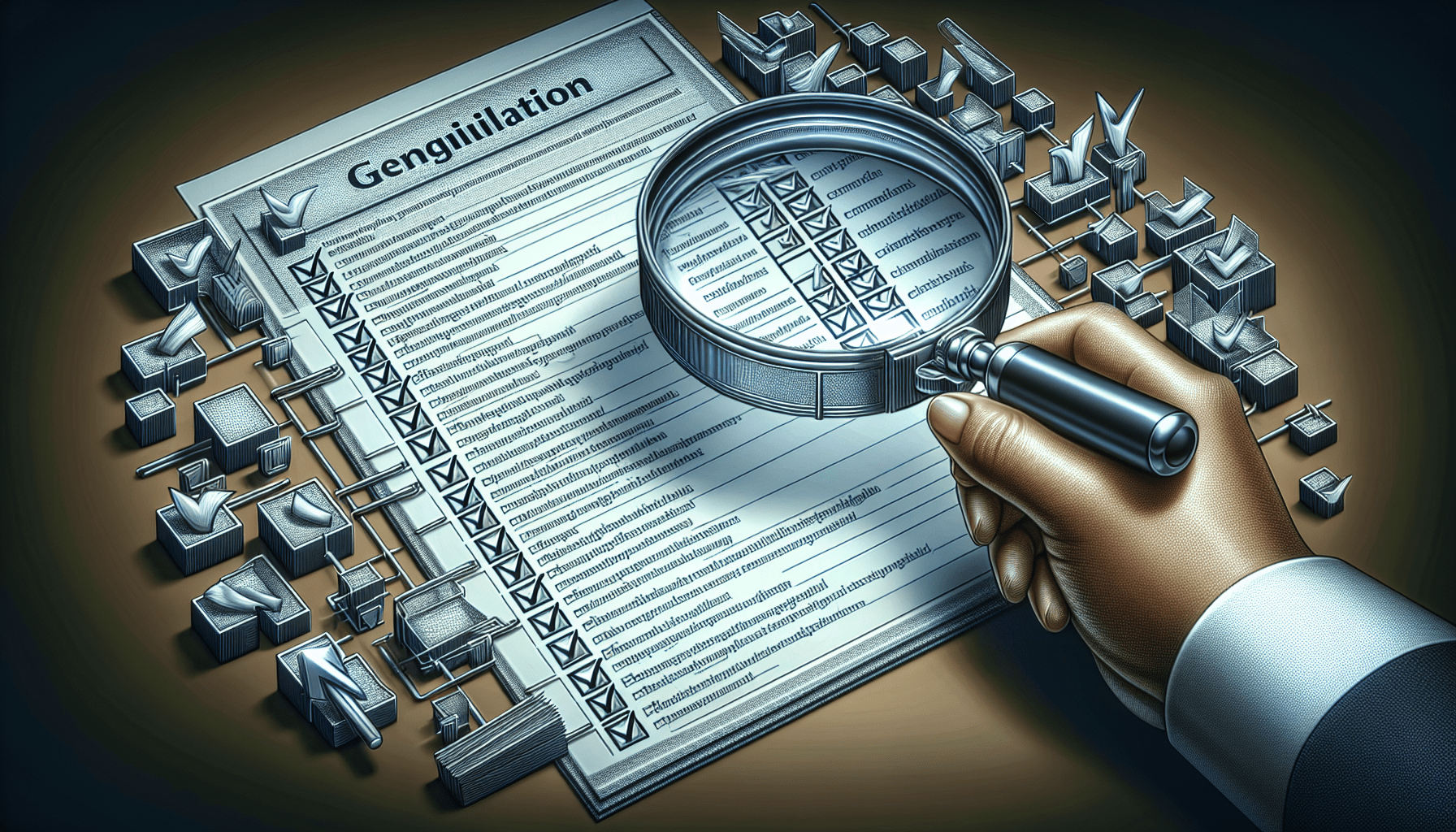In today’s rapidly evolving digital landscape, ensuring that your organization is compliant with cyber security regulations is more crucial than ever. A compliance audit can help identify potential vulnerabilities and ensure that your systems and processes are up to date with industry standards. By taking proactive measures, such as conducting regular risk assessments, keeping documentation organized, and staying informed about relevant regulations, you can prepare your organization for a successful compliance audit in cyber security.
How To Prepare For A Compliance Audit In Cyber Security
Have you been tasked with preparing for a compliance audit in the field of cyber security? It can be a daunting task, but with the right preparation, you can ensure a smooth and successful audit process. This article will guide you through the steps to take in order to prepare effectively for a compliance audit in cyber security.

Understanding Compliance Audit in Cyber Security
Before you jump into preparing for a compliance audit, it is essential to understand what it entails. A compliance audit in cyber security is an examination of an organization’s adherence to specific regulations, standards, or guidelines set forth by regulatory bodies or industry best practices. The purpose of the audit is to ensure that the organization is following the necessary protocols to protect sensitive information and maintain data security.
Assess Your Current Security Measures
The first step in preparing for a compliance audit is to assess your current security measures and practices. This involves taking stock of your organization’s existing cybersecurity policies, procedures, and controls. Conduct a thorough review to identify any gaps or weaknesses in your security posture that could lead to non-compliance during the audit.
Create a Compliance Audit Checklist
To ensure that you cover all the necessary areas during the audit preparation process, it is helpful to create a compliance audit checklist. This checklist should outline the specific regulatory requirements or standards that your organization needs to adhere to, along with corresponding security controls that need to be in place. Organize the checklist based on the audit scope and regulatory framework that applies to your organization.
Tips for Creating a Compliance Audit Checklist
When creating your compliance audit checklist, be sure to:
- Include detailed descriptions of each regulatory requirement or standard
- List out specific security controls that need to be implemented
- Assign responsibilities to team members for each checklist item
Conduct a Risk Assessment
In addition to reviewing your security measures, conducting a risk assessment is crucial in preparing for a compliance audit. A risk assessment helps you identify potential threats and vulnerabilities that could impact your organization’s compliance status. By understanding your risk exposure, you can prioritize remediation efforts and focus on areas with the highest impact on compliance.
Steps for Conducting a Risk Assessment
- Identify and document potential threats to your organization’s data security
- Assess the likelihood and potential impact of each threat
- Determine vulnerabilities that could be exploited by threat actors
- Prioritize risks based on their severity and likelihood of occurrence
- Develop a risk treatment plan to address high-priority risks

Document Your Policies and Procedures
One key aspect of compliance audit preparation is documenting your organization’s cybersecurity policies and procedures. Ensure that all security policies are up to date, well-documented, and easily accessible to audit reviewers. This documentation should outline the organization’s approach to data protection, access controls, incident response, and other security-related processes.
Best Practices for Documenting Policies and Procedures
- Use clear and concise language in your policy documents
- Include detailed procedures for implementing security controls
- Update policies regularly to reflect changes in regulations or security requirements
- Maintain a centralized repository for all policy documents for easy access during the audit
Train Employees on Security Awareness
Employee training plays a significant role in maintaining compliance with cybersecurity regulations. Educating your employees on security best practices and protocols helps mitigate human error, which is a leading cause of data breaches. Prior to the audit, conduct cybersecurity awareness training sessions to ensure that employees understand their roles and responsibilities in maintaining data security.
Key Training Topics for Employees
- Phishing awareness and recognizing suspicious emails
- Secure password practices and multi-factor authentication
- Data handling and protection guidelines
- Incident response procedures in the event of a security incident
Implement Security Controls for Compliance
Another critical step in preparing for a compliance audit is implementing security controls that align with regulatory requirements. This involves deploying technical safeguards, such as firewalls, encryption, and intrusion detection systems, to protect sensitive data from unauthorized access. In addition to technical controls, administrative and physical controls should be in place to ensure comprehensive data security.
Common Security Controls for Compliance
- Access controls to restrict user privileges and enforce least privilege
- Data encryption to protect sensitive information in transit and at rest
- Regular security patching and updates for software and systems
- Logging and monitoring of security events for threat detection
Test Your Security Controls
Once you have implemented security controls, it is crucial to test their effectiveness through regular security assessments and penetration testing. These tests help identify vulnerabilities and weaknesses in your security infrastructure before the compliance audit, allowing you to remediate issues proactively. Conducting vulnerability scans and penetration tests on a routine basis can help ensure that your organization’s data remains secure and compliant.
Importance of Security Testing
Regular security testing helps you:
- Identify vulnerabilities that could be exploited by cyber attackers
- Validate the effectiveness of security controls in place
- Improve overall security posture and reduce the risk of data breaches
- Demonstrate due diligence in protecting sensitive information to audit reviewers
Prepare Documentation for Audit Review
As the audit date approaches, gather all relevant documentation that will be required for review by auditors. This includes security policies, procedures, risk assessments, audit checklists, training records, incident response plans, and any other documentation that demonstrates your organization’s compliance efforts. Organize these documents in a systematic manner to facilitate the audit process and ensure that all necessary information is readily available.
Documentation Tips for Audit Preparation
When preparing documentation for audit review:
- Ensure that all documents are up to date and relevant to the audit scope
- Clearly label and organize documents for easy retrieval during the audit
- Include references to regulatory requirements or standards in documentation
- Verify the accuracy and completeness of all documents before the audit
Conduct a Mock Audit
To further prepare for the compliance audit, consider conducting a mock audit to simulate the audit process and identify any gaps in your compliance efforts. A mock audit allows you to test your readiness for the actual audit and address any issues that arise before auditors arrive. Solicit feedback from internal stakeholders and use the insights gained from the mock audit to refine your compliance practices.
Benefits of a Mock Audit
A mock audit helps you:
- Evaluate the effectiveness of your compliance preparation
- Identify areas of improvement in your security controls and documentation
- Familiarize your team with the audit process and expectations
- Enhance your organization’s overall readiness for the compliance audit
Engage with External Auditors
Finally, when the time comes for the compliance audit, engage with external auditors in a collaborative and transparent manner. Provide auditors with access to the necessary documentation and resources they need to conduct their assessment effectively. Be open to answering questions and providing additional information throughout the audit process to demonstrate your organization’s commitment to compliance.
Tips for Engaging with Auditors
When working with external auditors:
- Be proactive in addressing auditor inquiries and requests
- Offer explanations and clarifications on security controls and compliance efforts
- Maintain open lines of communication with auditors to address any concerns
- Cooperate with auditors to facilitate a smooth and efficient audit process
By following these steps and guidelines, you can ensure that your organization is well-prepared for a compliance audit in cyber security. Remember, the key to a successful audit is thorough preparation, documentation, and a proactive approach to addressing compliance requirements. By demonstrating your commitment to data security and regulatory compliance, you can instill confidence in auditors and stakeholders alike.



